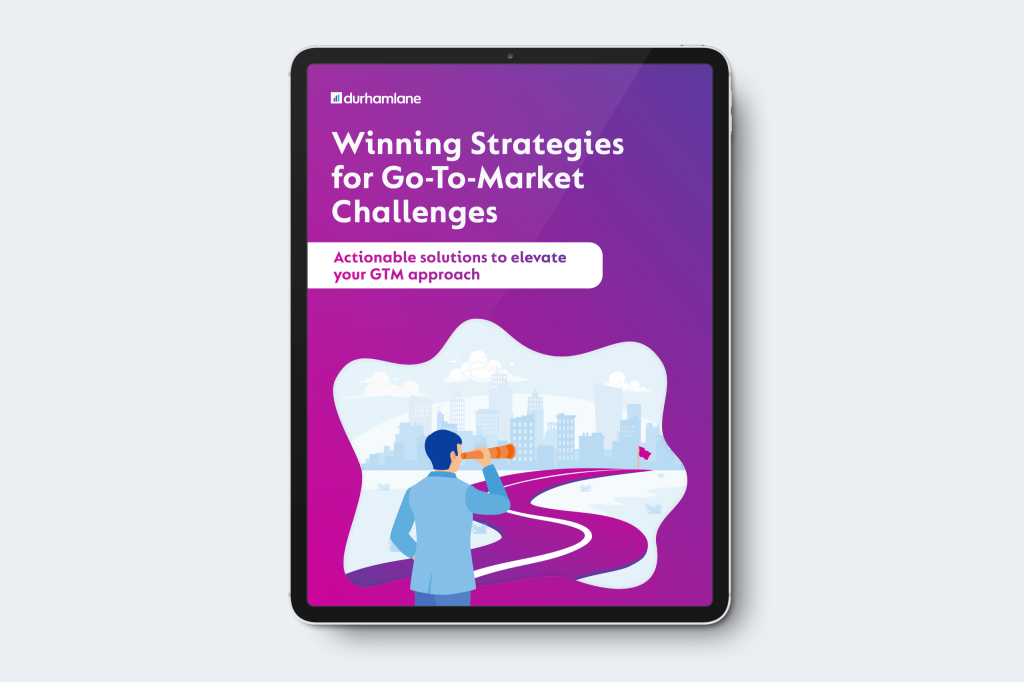Best B2B Sales Strategies for Enterprise & Mid-Market Growth
Estimated reading time: 4 minutes
Enterprise selling has become more complex. Buying cycles are longer, decision-making groups are bigger, and it is harder to capture and hold the attention of potential buyers. For sales leaders, the objectives remain unchanged: win new customers, maintain strong pipeline coverage, and ensure teams have the necessary resources to deliver sales.
Yet with the challenges mounting, sellers often struggle to generate or convert opportunities. Marketing leads can disappoint. Teams are spread too thinly across new business, renewals, and upsell. Recruiting and retaining skilled people is an ongoing battle.
The way forward is to focus on B2B sales strategies that cut through these barriers and create predictable growth. Below, we explore strategies that consistently work for enterprise and mid-market organisations, and why outsourced SDR teams are often the most effective way to bring them to life.
Principles of effective B2B sales strategies
The details of each strategy vary, but the best-performing approaches share three traits:
- Clear alignment with business goals. Every activity has to connect back to revenue outcomes, not vanity metrics.
- Efficient use of resources. Sales headcount is expensive. Strategies need to maximise revenue per seller and maintain healthy coverage.
- Responsiveness to buyer behaviour. Today’s buyers want relevance, personalisation, and choice in how they engage. Any strategy that ignores that will struggle.
Hybrid go-to-market: Combining inbound with outbound
New deals rarely come from one source. Relying on inbound alone leaves too much to chance, while pure outbound campaigns risk exhausting both your teams and your prospects. A hybrid go-to-market (GTM) approach combines the two.
Inbound efforts bring leads through channels such as content, SEO, paid campaigns, or events. The challenge is that quality varies and response times matter – a lead left untouched for days quickly loses value. Outbound activity, by contrast, creates opportunities by targeting accounts and stakeholders directly, ensuring the pipeline is generated even when inbound flow is light.
When run together, inbound and outbound create a more predictable and balanced pipeline. The sticking point is execution. Internal teams often lack the resources to respond quickly to inbound while also sustaining disciplined outbound campaigns. For businesses with limited in-house capacity, outsourced SDR teams can address this directly. They specialise in qualifying inbound leads immediately and running structured outbound campaigns that target the right accounts, without draining your sellers’ time.
Get started now with the ‘Winning strategies for go-to-market challenges’ eBook.
Marketing and sales collaborate for conversion
The handoff between marketing and sales is one of the most common places for revenue to leak. Marketing teams invest in campaigns that generate leads, but without a clear follow-up process, those leads are too often wasted. Research shows that you’re 7 times more likely to qualify a lead if you reach out within an hour, compared to waiting just one more hour. Yet 55% of companies take five or more days to respond to leads.
For enterprise sales, that’s a major risk. Marketing and sales collaboration requires more than a shared dashboard. It means agreeing on a clear definition of a qualified lead, setting service-level agreements (SLAs) for response times, and having regular feedback between the two teams to refine targeting.
An outsourced SDR function provides the missing link. SDRs ensure inbound leads are contacted immediately, qualified properly, and handed to the right salespeople at the right time. This level of reactivity protects marketing investment and gives sales leaders confidence that the pipeline is being worked effectively..
Account-based selling: Focus on high-value customers
In complex markets, broad prospecting is inefficient. The highest returns come from focusing on the accounts with the greatest potential. That’s the principle behind account-based selling (ABS).
ABS requires building a target account list, mapping decision-making units, and tailoring outreach to each stakeholder. Rather than generic messaging, SDRs address role-specific pain points and coordinate outreach across channels, from social to events.
The workload can be heavy. Accounts often involve multiple stakeholders and long engagement cycles. Many in-house teams lack the bandwidth to sustain this level of consistency. Outsourced SDRs can fill that gap, providing the discipline and persistence to keep accounts engaged over the long term.
Social selling and multi-channel engagement
Buyers read email when convenient, scroll LinkedIn during their day, pick up the phone when it suits, and attend events when they need insight. Limiting your outreach to a single channel is no longer effective.
Social selling in particular has grown in influence. A strong LinkedIn presence helps salespeople build credibility and gain access to networks they might otherwise miss. But social is only one part of the puzzle. Combining phone, email, and event engagement ensures more opportunities to connect and keeps your brand front of mind.
durhamlane’s experience shows that multi-channel consistency is critical. A prospect who ignores an email may engage with a LinkedIn message. Someone who attends an event may respond better to a call the next day. SDR teams trained in multi-channel outreach increase the chance of securing that vital first meeting.
Strengthening the sales cycle beyond prospecting
Winning new business is only one part of the job. Many businesses lose momentum further down the sales cycle, either by neglecting existing opportunities or missing chances for renewal and upsells.
Typical gaps include event leads not being followed up on, service contracts expiring without renewal conversations, or install base customers being overlooked for cross-sell campaigns. Each of these represents revenue left on the table.
Our work shows that structured campaigns in these areas often deliver faster results than pure new customer acquisition. Pre- and post-event follow-up, targeted outbound for service contract conversion, and proactive cross-sell into existing accounts can all unlock growth. Outsourced SDR teams are particularly effective here because they have the time and focus to ensure nothing slips through.
Overcoming barriers with a mix of tech and talent
Even with the right strategies in place, two structural barriers often hold leaders back: technology and talent.
Sales technology is now essential for scale, whether it’s CRM, sequencing tools, or intent data platforms. The challenge is adoption. Too many organisations buy technology that sits underused because teams are not trained or motivated to use it properly.
Talent presents an even bigger hurdle. Recruiting SDRs takes time and money. Training consumes management attention. And attrition is high. Studies show that average employment tenure is less than 15 months. By the time an SDR is fully productive, they may already be preparing to leave.
Get a personalised estimate for building an SDR team with our SDR Cost Calculator.
Outsourcing sidesteps both challenges. Providers bring teams who are already trained on the latest tools, who are motivated to deliver results, and whose turnover risk is absorbed outside your organisation. Costs are predictable, and the ramp-up time is shorter.
Why outsourced SDRs drive B2B sales effectiveness
Pulling these threads together, the challenge for most enterprise sales leaders is not knowing what strategies to pursue; it’s resourcing them effectively. Running hybrid GTM, aligning sales and marketing, delivering ABS campaigns, and ensuring multi-channel engagement all require capacity that internal teams often don’t have.
This is where outsourced SDR teams create real leverage. They provide scalable capacity without adding permanent headcount. They ensure inbound leads are converted quickly, protect marketing ROI, and run outbound campaigns that sustain account engagement. And they bring tested processes, trained people, and access to technology without the hidden costs of hiring.

durhamlane has delivered this model across industries, from net new customer acquisition and inbound conversion to install base retention and event follow-up. Our ‘Selling as a Higher Level’ approach consistently helps enterprise and mid-market organisations build pipeline, improve conversion, and forecast revenue with greater confidence.
Practical steps to put these strategies into action
If you’re a sales leader who is ready to act, you can follow a straightforward process:
- Audit the current GTM approach. Identify where leads are being lost or accounts are underserved.
- Set account priorities. Concentrate effort on the customers most likely to deliver significant revenue.
- Tighten marketing–sales processes. Agree on clear SLAs and qualification criteria.
- Assess resource gaps. Where internal teams are stretched, partner with outsourced SDRs to accelerate execution.
Enterprise selling will only get more complex. Buying groups are unlikely to shrink, decision cycles will remain long, and attention spans won’t get any longer.
But with the right B2B sales strategies, sales leaders can overcome these challenges.
Outsourced SDR teams provide missing capacity. They ensure strategies are executed consistently and give leaders confidence that pipeline and revenue goals are achievable.
If you’re ready to explore how durhamlane can help you build pipeline and increase conversion with proven outsourced SDR support, let’s talk.
